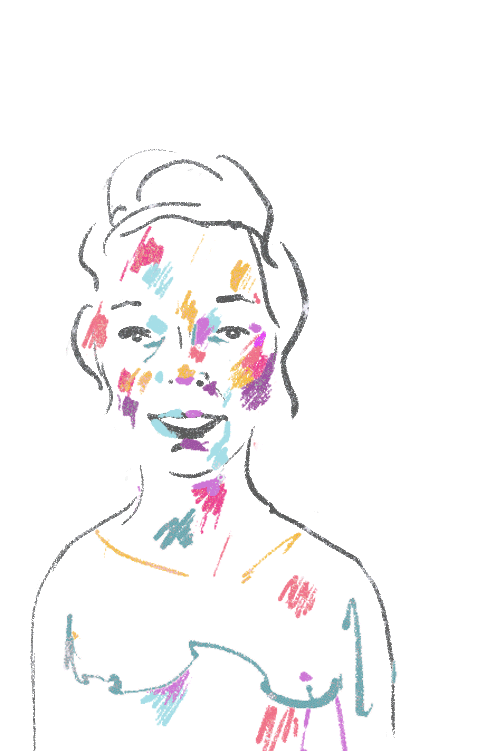In Ottoman-Islamic Mythology through Miniatures (Minyatürlerle Osmanlı-İslâm Mitologyası), Metin And describes the myth of the Waqwaq Tree, depicting women as passive objects of desire, suspended by their hair from branches. In this artwork, however, women rewrite their own narratives: The central woman refuses to be plucked and subjected to rape; she cuts her own hair, liberating herself. As she falls, she passes her scissors to another woman—one woman's escape enables the liberation of others.

The piece reinterprets the depiction of the Waqwaq Tree found in the manuscript Kitab al-Bulhan (Book of Wonders). The original Arabic text accompanying the illustration is replaced by "The Liberation of the Woman from the Waqwaq Tree."
The artwork not only rewrites a historical myth but also references Iran's Jin, Jiyan, Azadî (Woman, Life, Freedom) movement. Here, cutting hair symbolizes not loss, but defiance.

This mono-print GIF was exhibited in Tightly Knotted to a Similar String at Quick Art Space, curated by Nergis Abıyeva, with exhibition design by Kubilay Ozmen and assistance by Gönül Abıyeva.



In Ottoman-Islamic Mythology through Miniatures (Minyatürlerle Osmanlı-İslâm Mitologyası), Metin And describes the myth of the Waqwaq Tree, depicting women as passive objects of desire, suspended by their hair from branches. In this artwork, however, women rewrite their own narratives: The central woman refuses to be plucked and subjected to rape; she cuts her own hair, liberating herself. As she falls, she passes her scissors to another woman—one woman's escape enables the liberation of others.
The piece reinterprets the depiction of the Waqwaq Tree found in the manuscript Kitab al-Bulhan (Book of Wonders). The original Arabic text accompanying the illustration is replaced by "The Liberation of the Woman from the Waqwaq Tree."
The artwork not only rewrites a historical myth but also references Iran's Jin, Jiyan, Azadî (Woman, Life, Freedom) movement. Here, cutting hair symbolizes not loss, but defiance.
This mono-print GIF was exhibited in Tightly Knotted to a Similar String at Quick Art Space, curated by Nergis Abıyeva, with exhibition design by Kubilay Ozmen and assistance by Gönül Abıyeva.
